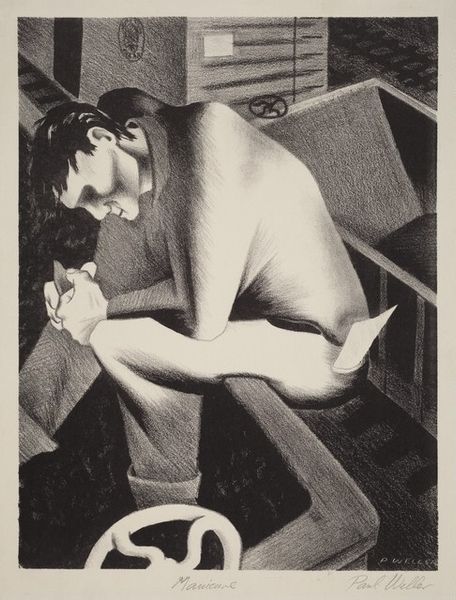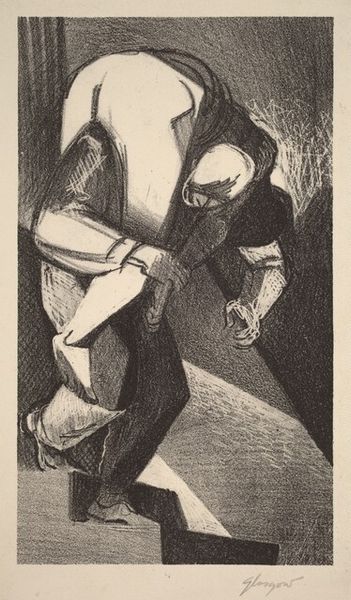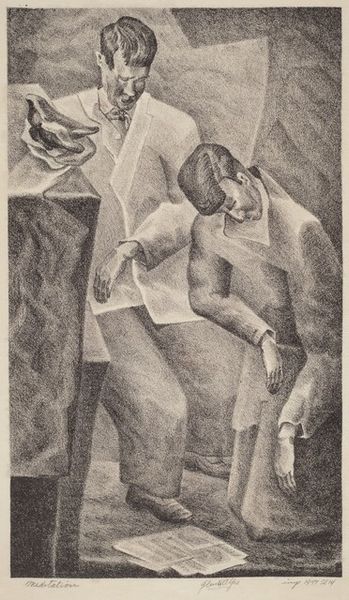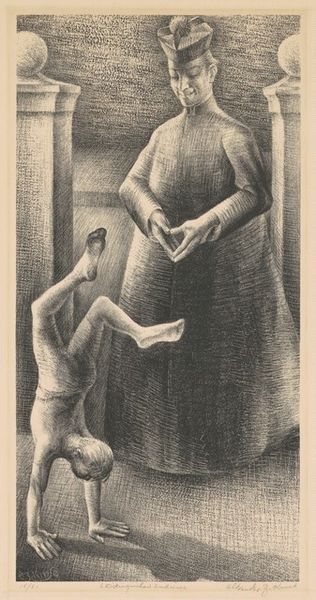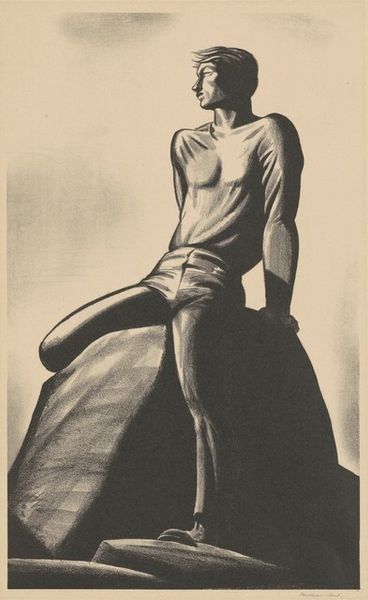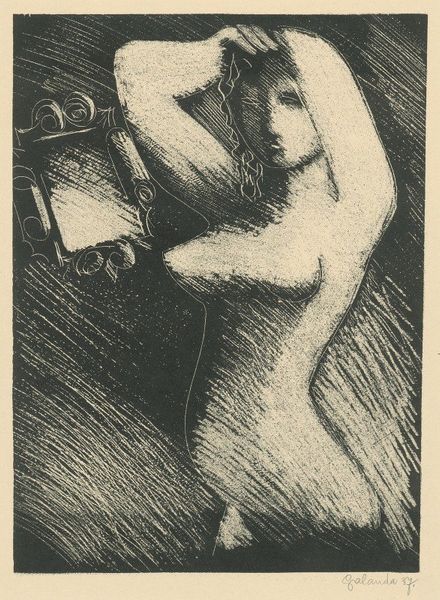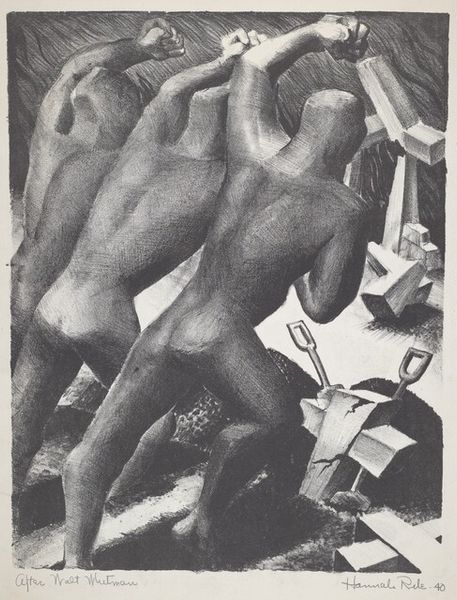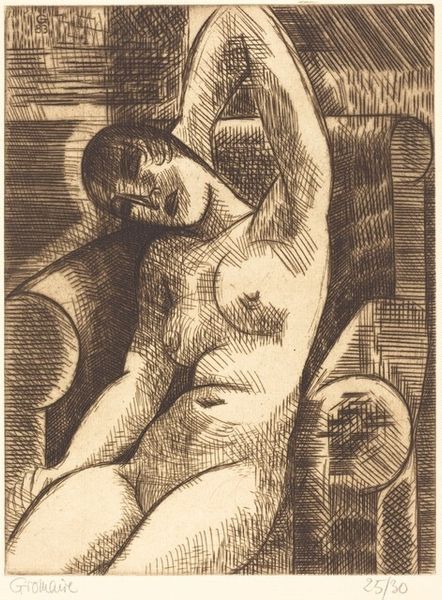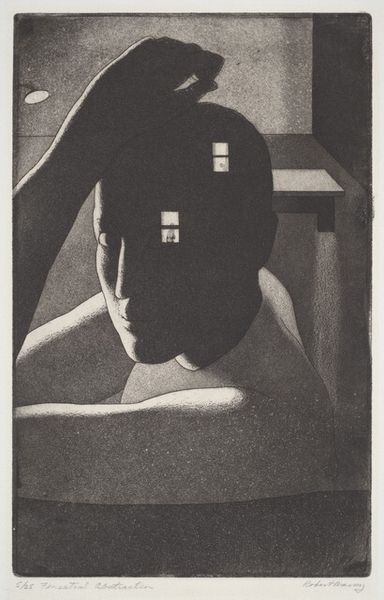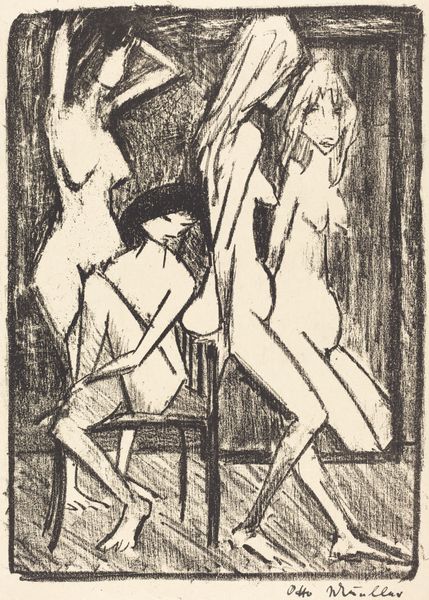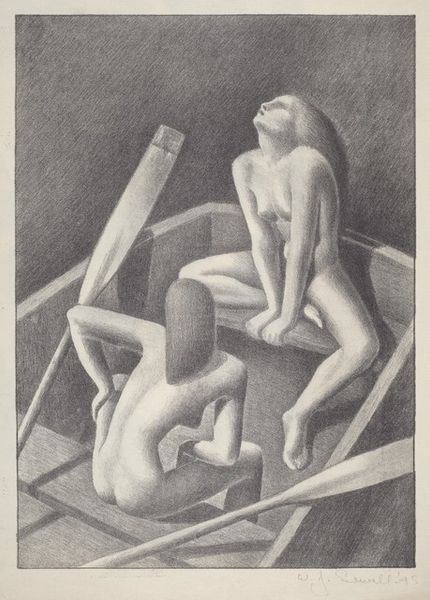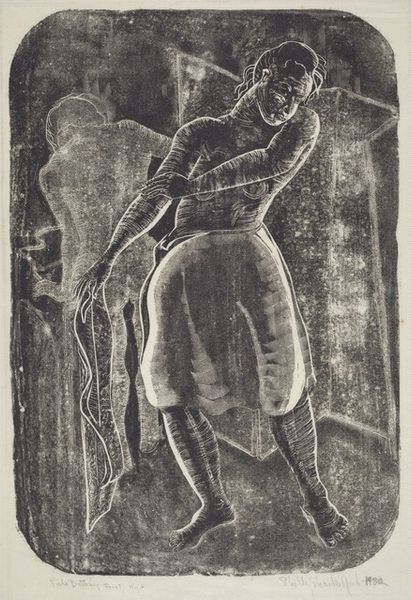
drawing, print, charcoal
#
portrait
#
drawing
# print
#
charcoal drawing
#
figuration
#
pencil drawing
#
portrait drawing
#
genre-painting
#
charcoal
#
realism
Dimensions: stone: 438 x -- mm image: 357 x 199 mm sheet: 454 x 284 mm
Copyright: National Gallery of Art: CC0 1.0
Editor: This is Richard Franklin Bartlett's "Dancer Resting," a charcoal drawing from 1946. There's such a melancholic air about this dancer. It's like she's carrying the weight of the world. What do you see in this piece? Curator: Beyond the initial impression of melancholy, I see a reflection of the socio-economic realities for women, and specifically performers, in the post-war era. The Second World War had ended just a year before, and societal expectations for women shifted dramatically, pushing them back into domestic roles after their vital contributions to the war effort. What narratives might this "resting" posture evoke, given that context? Editor: So, it's not just about physical rest, but perhaps a kind of societal fatigue or disillusionment? The composition, with the looming figure behind her, almost feels like pressure. Curator: Exactly. Think about the labor involved in dance – the constant performance, the pressure to conform to certain body ideals, the precarity of the profession. This piece could be interpreted as a quiet rebellion against those demands, a reclaiming of personal space and time in a world that constantly objectifies and scrutinizes female bodies. Does knowing this alter your understanding of her posture? Editor: It does. I initially saw it as simple exhaustion, but now it feels more like a conscious act of resistance, maybe even a moment of contemplation about her future. The way Bartlett uses light and shadow… Is it playing a role? Curator: Absolutely! Notice how the light focuses on her face and hands, drawing our attention to her inner thoughts and her labour. The darkness enveloping the other figure could represent the societal pressures that she is momentarily escaping. It seems the artist understood, consciously or not, the unique struggles facing women, using the visual language of art to provoke social commentary. Editor: Wow, I never would have picked up on that without your perspective! It’s made me realize how much the historical and social context shapes our understanding of art. Curator: Indeed, it's not merely an aesthetic object but also a document, reflecting the lives and struggles of individuals within their unique time and place. Looking closely at these works allows for a richer more complex interpretation.
Comments
No comments
Be the first to comment and join the conversation on the ultimate creative platform.
